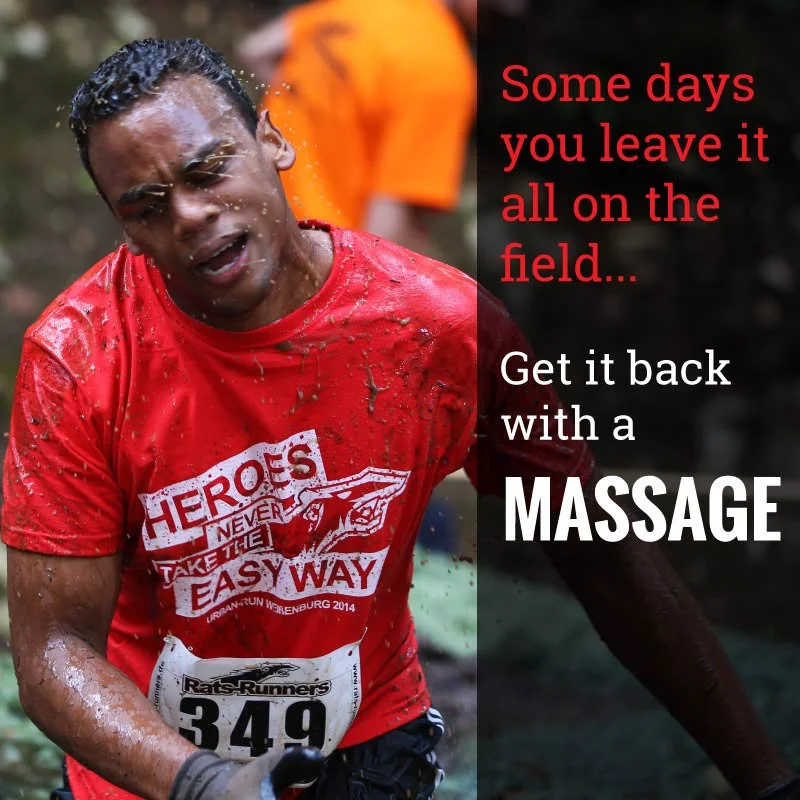After a big sports event your body will be stretched to its limits, and ou will more than likely be feeling tired and sore. The ideal time for a massage, we think!
A post-event massage is typically performed anything from 30 minutes
up to a day and a half after a race or event. It’s designed to help
improve your blood circulation, get lymph flowing and relax tired
muscles after you’ve pushed them hard.
What’s A Post Event Massage?
Getting a post-event massage will give you an immediate boost, however well you performed in the event. If you opt for a massage immediately after the event, like a pre-event massage it will be short yet effective. Targeted at the areas you’ve over-used and may be hurting, it’ll be a 15-minute session that quickly gets the blood flowing where it’s needed for repairs, stretches your muscles and relieves any cramp or tightness.
Massage after a sporting event is most likely to involve light pressure as well as stretching techniques that help you to get your muscles back to normal after a big event involving strenuous exercise. It can help to destress mind and body, as well as preventing delayed onset muscles, fatigue and muscle tightness.
Why Do I Need A Post-Event Massage?
You’ve put your body to the test during a big sporting event, now it needs to recover! Your muscles will feel tight after you’ve completed an event, which can be a result of tiny, microscopic tears in the muscle fibres. Although this is perfectly normal, tight muscles can lead to injuries like muscle strains and tears if not dealt with, and a massage is the perfect way to soothe stressed muscles. It can also boost lymph movement around your body which can help prevent lactic acid build up in your muscles.
Having a post-event massage may help prevent the dreaded delayed onset muscle soreness (DOMS) and is good for overall recovery after any strenuous exercise. If you’re feeling stiff and sore, a good postevent massage will revive you, helping to improve your range of movement, reduce soreness, fatigue and more. The rubbing and friction help to warm up muscles which relaxes and loosens muscle fibers too.
If you’ve had a cramp during the event, be sure to tell your therapist so they can target specific techniques on the affected areas. If you have had cramps in several areas, you’ll probably be advised to drink plenty of fluids as this can be down to dehydration too. Tell the therapist if you have any other symptoms, too, like any light headedness or dizziness, although it’s quite normal to feel a bit wobbly after the massage.
Afterwards, remember to book in more massage sessions. Sports massage is the ideal type of massage for athletes, for obvious reasons, and ideally you should try and book something in on a weekly basis after a big event to help heal and strengthen your musculoskeletal system and prepare you for your next event.

